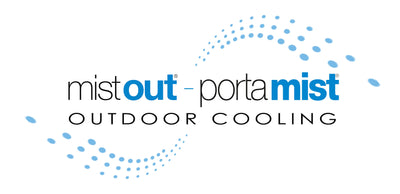North American summers are hot. Sometimes spring and fall temperatures reach dangerous levels as well. Most summers see heat waves in one or more parts of the United States. Heat is one of the leading weather-related killers in the United States, resulting in hundreds of fatalities each year and even more heat-related illnesses.
Here are some heat safety tips and resources:
- Stay hydrated
- Rest under a cool shaded place if you feel hot if possible add misting
- When possible, utilize indoor facilities that accommodate physical activity
- Plan outdoor activities for the coolest times of the day
- Limit and reduce the duration of outdoor activity or add a cooling station
- Take frequent breaks under a cooling station
- Provide drinking water before, during, and after the activity
- Drink more water than usual. Avoid drinks with sugar, alcohol, and caffeine
- Pace physical activity
- Plan for cool-down recovery time in the shade if possible following an outdoor activity
- Wear light-colored clothing, wide-brimmed hats
These other tips and resources are from a website designed to inform you about the health dangers of heat, prepare you for excessive heat events, and tell you what to do during an excessive heat wave. You will find vital information about the dangers of leaving children, pets or anyone with limited mobility alone in a car even for a few minutes in what might seem like mild weather. Children locked in cars have died in December and in 70-degree weather, even with a window left open a little. You also will find information about protecting yourself from excessive heat, educational materials and specifics on how the National Weather Service keeps you aware of potentially dangerous situations. NWS tries to make learning fun with games and activities to help educate your children about the dangers of heat and provide you with links for more information. Spanish language outreach materials are also available.
Learn from real-life heat victims. You can also see our heat safety videos. If you, or someone you know, have been a victim of excessive heat, please share your story so we can prevent others from becoming a heat victim. When you write, please note that NWS has permission to use your story and, if possible, let us know the town and state you were in and the year the event took place.
Prevent heat strokes at work:
Dangers of Working in the Heat
Every year, dozens of workers die and thousands more become ill while working in extreme heat or humid conditions. There is a range of heat illnesses and they can affect anyone, regardless of age or physical condition.
Employer Responsibility to Protect Workers
Under OSHA law, employers are responsible for providing workplaces free of known safety hazards. This includes protecting workers from extreme heat. An employer with workers exposed to high temperatures should establish a complete heat illness prevention program.
- Provide workers with water, rest and shade.
- Allow new or returning workers to gradually increase workloads and take more frequent breaks as they acclimatize, or build a tolerance for working in the heat.
- Plan for emergencies and train workers on prevention.
- Monitor workers for signs of illness.
Resources
OSHA's Occupational Exposure to Heat page explains what employers can do to keep workers safe and what workers need to know - including factors for heat illness, adapting to working in indoor and outdoor heat, protecting workers, recognizing symptoms, and first aid training. The page also includes resources for specific industries and OSHA workplace standards. Also, look for heat illness educational and training materials on our Publications page.
Free OSHA Heat Safety App for both Android and iPhone.
Prevent heatstroke at work with cooling stations with a Portamist

Resources found from:
